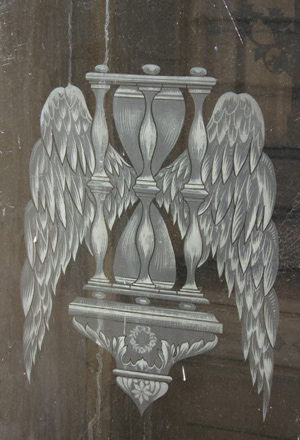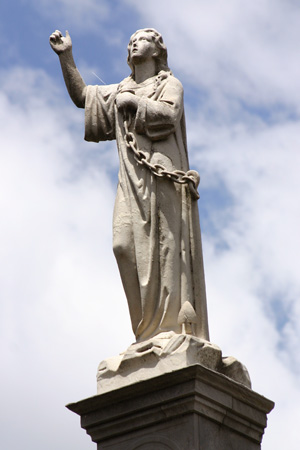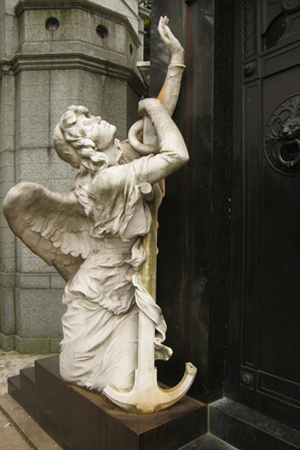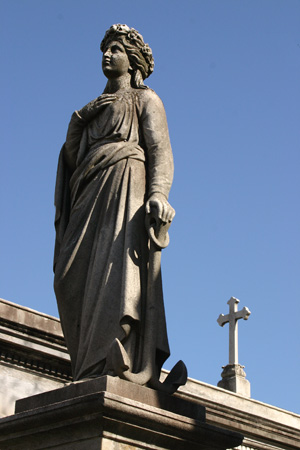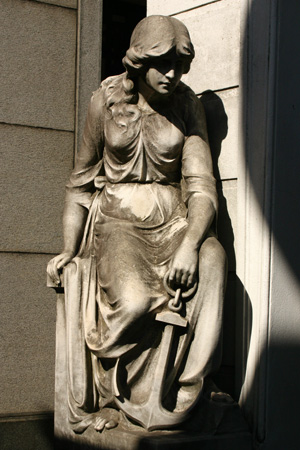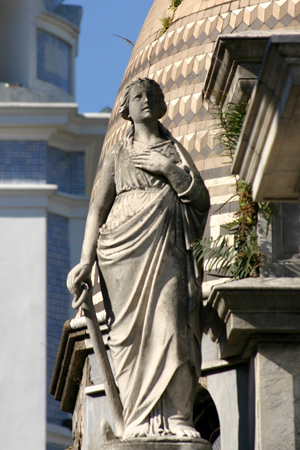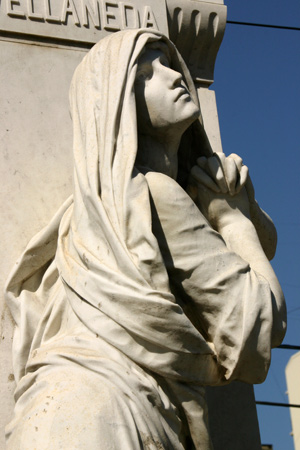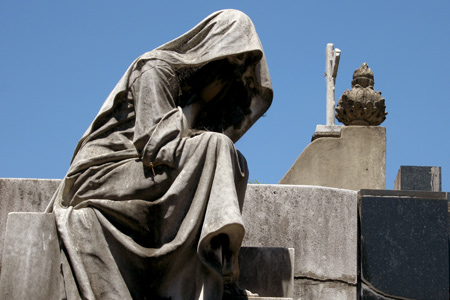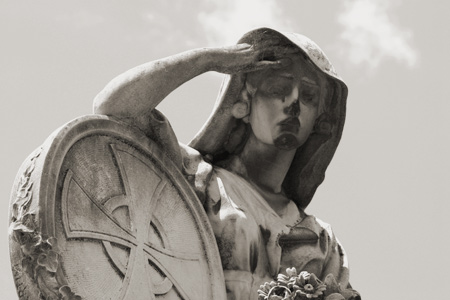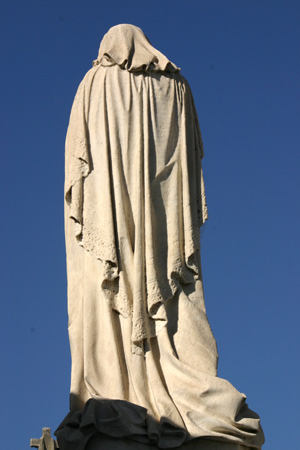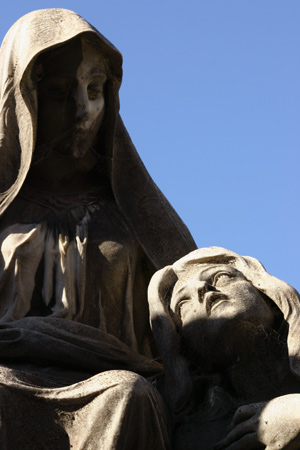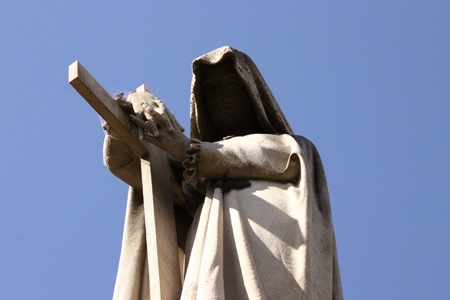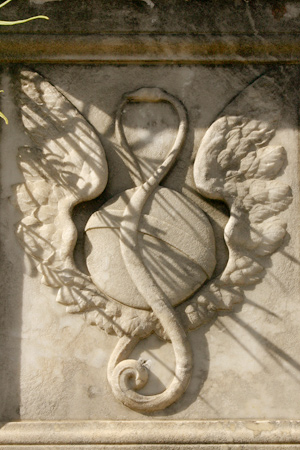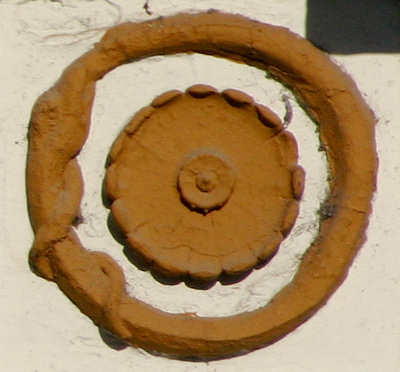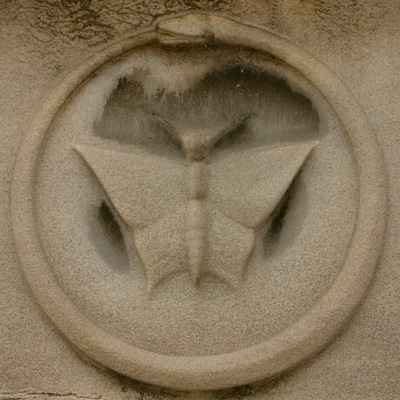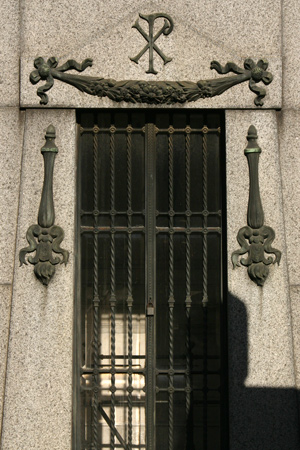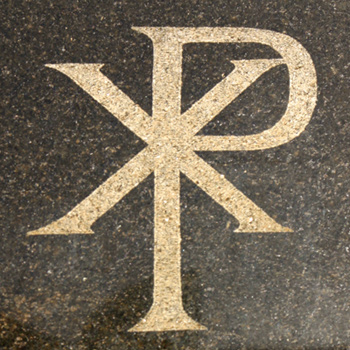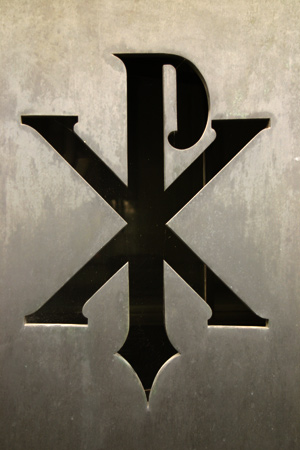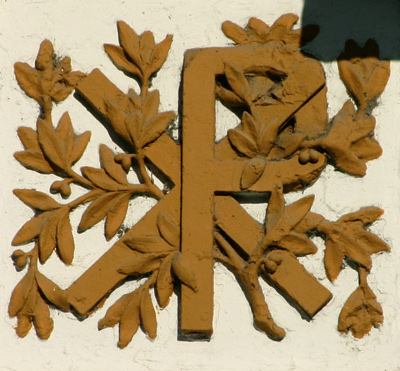An hourglass represents the notion of time passing. The sand is trapped & conveys the idea of time being limited or finite. Once the sands run out, no one is around to flip the hourglass over again.
Angel wings are common Christian symbols of heaven & could signify two possible things when coupled with an hourglass: demonstrating your fate after the sands of time run out, or reinforcing the fact that time is fleeting. It provides a subtle reminder to make the most of every moment.
Along with the skull & crossbones, the winged hourglass is the most ubiquitous symbol in Recoleta Cemetery. One even appears on the grand entrance gate:
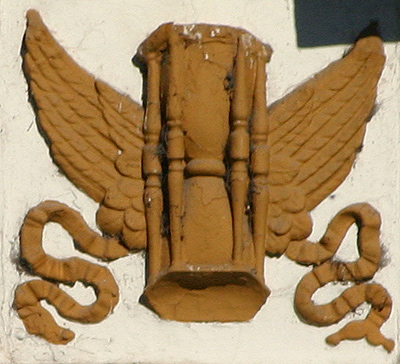
Besides acting as the logo of this blog, the symbol appears in a variety of forms… carved directly into the mausoleum itself:
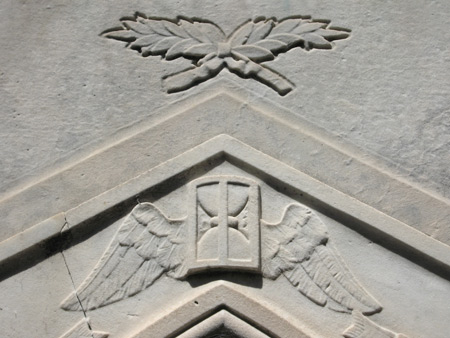
…incorporated into wrought-iron doors:
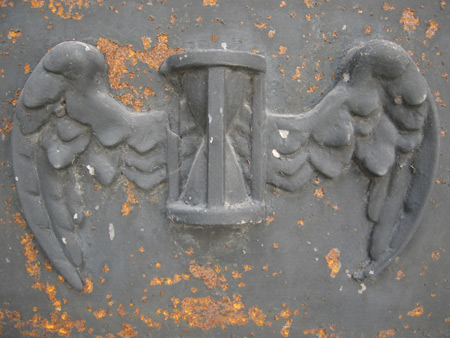
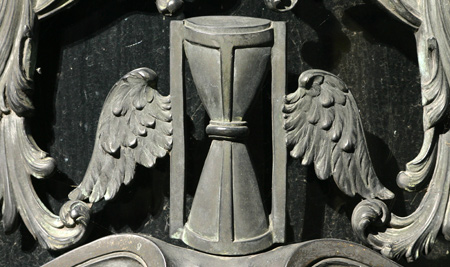
…as a separate sculpture:
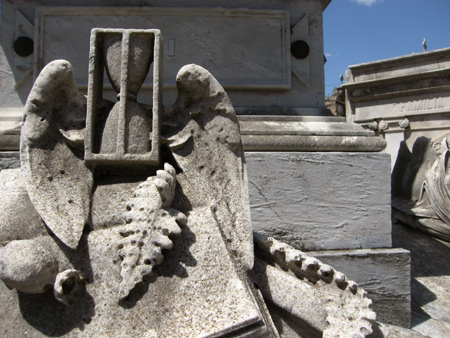
…or, as in this personal favorite, etched into glass:
